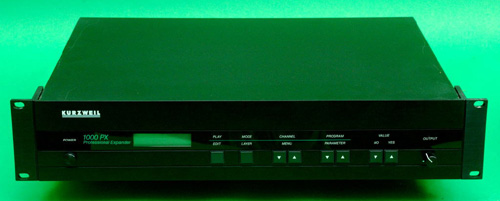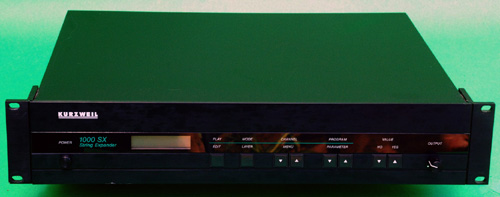Model
|
Polyphony
# of voices
|
Sample
frequency
|
Soundblock
samples
|
K1000
|
24
|
50Khz
|
Base: Grand pianos, electric
organs, string sections, trumpets, baritone horn,
clarinet, choirs, vibes, acoustic bass, digital waveforms.
|
|
|
|
*PXA: Rhodes
pianos, flutes, drums, percussion
|
|
|
|
*PXB: Tenor sax, steel string
acoustic guitar, distorted electric guitar, extended percussion,
extended flutes, extended horns, marimba, harp
|
1000PX
|
24
|
50Khz
|
Base: Grand pianos, electric
organs, string
sections, trumpets, baritone horn, clarinet, choirs, vibes, acoustic
bass, digital waveforms. |
|
|
|
PXA: Rhodes
pianos, flutes, drums, percussion |
|
|
|
PXB: Tenor sax, steel string
acoustic guitar, distorted electric guitar,
extended percussion, extended flutes, extended horns, marimba, harp |
1000HX
|
20
|
60Khz
|
Base: Trumpet, muted trumpet,
trombone, tenor sax, digital waveforms.
|
|
|
|
HXA: Alto sax, baritone sax,
soprano sax, growl sax, brass stabs, extended digital waveforms |
1000SX
|
20
|
60Khz
|
Base: String sections, violins,
cellos, pizzacoto strings, digital waveforms
|
|
|
|
SXA: Flutes, french horns,
bassoons, clarinets, oboes, tympani, extended digital waveforms
|
1000GX
|
20
|
60Khz
|
Base: Steel string acoustic,
nylon string acoustic, hollow body jazz, clean electric, lead electric,
mutes, harmonics, electric bass, acoustic bass, digital
waveforms. No expansion soundblock was ever offered for the
1000GX.
|










